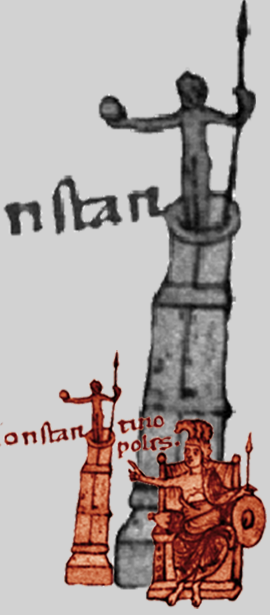The Byzantine Heritage
This project focuses on the long term tangible impact of the contacts with Byzantium on the cultural history of Central Europe. It aims to create a census of all objects of Byzantine origin or with a Byzantine theme in the Danube regions and the northern Alps (with a focus on Austria), both movable (such as manuscripts) and immovable (such as wall paintings). It investigates the ways of transmission and modes of (re)interpretation or even modification within the changing contexts of their aesthetic, religious, political or economic appreciation from the medieval to the modern period. A further focus lies on the travel of literary motifs between the medieval West and Byzantium, based on the long lasting research of Carolina Cupane.
Cooperation partners
- Römisch-Germanisches Zentralmuseum, Leibniz-Forschungsinstitut für Archäologie / Mainz (Germany)
- Austrian National Library, Department of Manuscripts and Rare Books / Vienna
Publications
- Ch. Gastgeber – D. Heher (eds.), Das goldene Byzanz und der Orient: Exhibition catalogue, Schallaburg 2012 (link)
- D. Heher (eds.), Byzanz und der Westen. 1000 vergessene Jahre. Exhibition catalogue, Schallaburg 2018 (link)
- F. Daim - G. Gastgeber - D. Heher - C. Rapp (eds.), Menschen, Bilder, Sprache, Dinge. Wege der Kommunikation zwischen Byzanz und dem Westen. 2 Vol.s, Mainz 2018 (link)
- Ch. Gastgeber, Die griechischen Handschriften der Bibliotheca Corviniana in der Österreichischen Nationalbibliothek: Provenienz und Rezeption im Wiener Griechischhumanismus des frühen 16. Jahrhunderts (Veröffentlichungen zur Byzanzforschung 34). Vienna 2014 (online)
- C. Cupane - B. Krönung (Hrsg.), Fictional Storytelling in the Medieval Eastern Mediterranean and Beyond (Brill's Companions to the Byzantine World 1). Leiden – Boston 2016 (link)
- J. Preiser-Kapeller, Von Ostarrichi an den Bosporus. Ein Überblick zu den Beziehungen im Mittelalter, in: Pro Oriente Jahrbuch 2010. Vienna 2011, 66–77 (online)
- A. Rhoby, Byzanz und "Österreich" im 12./13. Jahrhundert: Mythos und Realität, in: A. Speer – D. Wirtmer (eds.), Knotenpunkt Byzanz: Wissensformen und kulturelle Wechselbeziehungen. Berlin 2012, 589–610. (online)


